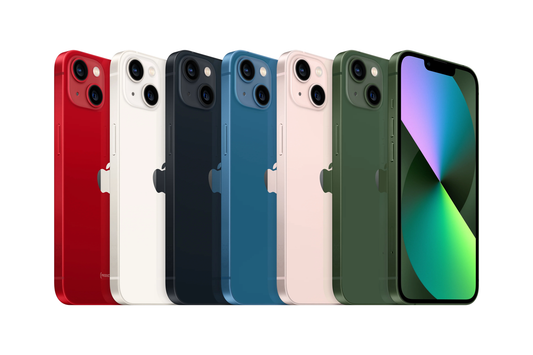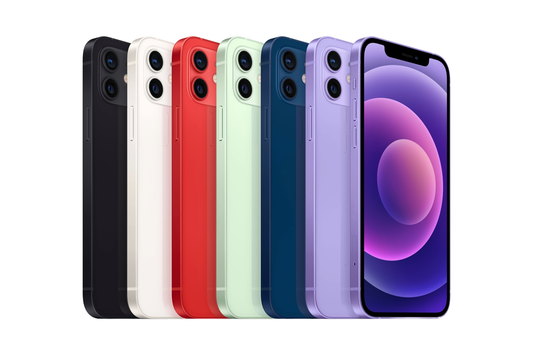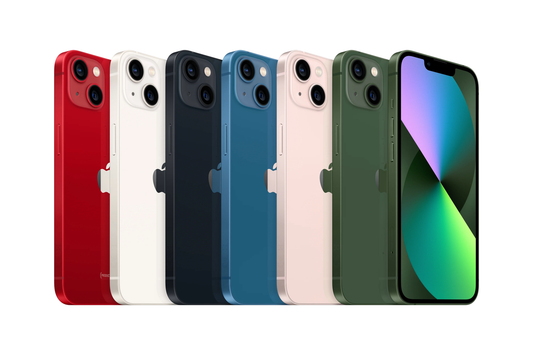If you’re looking for a premium iPhone but don’t want to break the bank getting one new from Apple, you’re not alone. Every day hundreds of Canadians save big by buying a used iPhone.
Platforms like Kijiji, Craigslist, and eBay are often the cheapest options out there, but the savings come with their fair share of risks. After the sale is complete, there’s very little chance you’ll ever hear from the seller again.
If anything should go wrong with the phone, you’ll be on your own.
Companies like Orchard are out there to eliminate the risks of buying a used iPhone. Thorough inspection of each phone, a free 90-day warranty, and unmatched customer support mean that you’re guaranteed to end up happy with your purchase.
If you’re dead-set on saving a bit by using online classifieds however, you should know what you’re getting into. Arm yourself with all the information you’ll need to avoid making a purchase that you’ll regret.
Decide which iPhone is right for you
When you visit a site like Kijiji, you’re presented with thousands of listings and the number of different phones available is overwhelming. To narrow down your choices, it’s important to know ahead of time exactly what iPhone you’re looking to buy.
If you’ve settled on buying a used iPhone, the next step is to figure out which model is the perfect fit for you. To help with this, we’ve put together a quick quiz that will let you know exactly which iPhone suits your unique needs.
Estimated sale price for an Unlocked 32GB device as of July 2019
Blacklist
Buying a blacklisted phone on Kijiji is probably the worst outcome. The blacklist is a database of phones that have been reported as stolen. Once a phone is blacklisted, it will not be able to connect to any network.
The phone will seem to be working perfectly, but the moment you pop in your SIM card, you won’t be able to connect to your carrier. If this happens, you’ve essentially bought a very expensive iPod.
Check the IMEITo avoid this ordeal, you should always ask for the IMEI number of the phone before you meet up. An IMEI is a unique identification number for the device. The blacklist is a list of banned IMEI numbers, so this is exactly what you need to check to verify that the phone has not been reported stolen.
When you have the IMEI, head over to the IMEI checker built by the Canadian Wireless Telecommunications Association (CWTA). Enter the IMEI, hit search, and you’ll know in seconds if the phone’s been reported as stolen.
Once you meet up with the seller to buy the iPhone, it’s important to make sure that they gave you the actual IMEI for that phone. Punch in *#06# on the phone app. If the number shown matches the number they gave you, you should be in the clear.
Understand the risk of buying a used iPhone in 2020Of course, there’s no way to guarantee that the phone won’t be reported as stolen after you’ve bought the phone.
If the seller has the phone under insurance, they might report the phone as stolen once they’ve sold it to you. They stand to gain a bit of money, and you stand to lose the use of your phone.
Once a phone ends up on the blacklist, only the person that initially reported it stolen can have it removed. If you end up with a blacklisted phone, you could try contacting the seller, but chances are you’ll be out of luck.
Check for activation lock when purchasing a used iPhone
Apart from the blacklist, you can also be prevented from using an iPhone by an activation lock, which is tied to an Apple ID. Once the activation lock is in place, the Apple ID passcode would have to be entered to start up the phone after it has been reset.
Luckily, there’s a foolproof way to tell if the activation lock is enabled on an iPhone – try to activate it! To do this, you’ll need to have a SIM card, so make sure you have one with you when you meet the seller.
From an iPhone home screen, go to Settings > General > Reset > Erase All Content and Settings. Once it’s been reset, pop in your SIM card, and start the activation process. If at this point you’re asked to enter an Apple ID and passcode to proceed, then the activation lock is still active on the phone.
This doesn’t necessarily mean that the seller is trying to unload a stolen phone on you. It could just be that they didn’t realize the activation lock was still on. If this is the case, ask them to follow these steps to remove the lock.
Test the iPhone before you buy
If you have confirmed that the phone is not blacklisted or activation locked, you might actually be looking at a phone that’s safe to buy. The last thing you’ll want to do is test out all of the phone’s main functions.
To do this effectively, you’ll want to come equipped with a few things. Make sure you have a working Apple charger and headphones.
If you use Bluetooth devices, bring one of these as well. The most important thing to bring is a friend. Preferably one who has the same iPhone that you’re going to buy.
If the phone passes all of the following tests, it could be worth your hard earned money.
1. Screen
The first thing you’ll want to do is crank up the brightness on the phone and open up the “Settings” or “Notes” app so you can get a white background on the screen. Does the white look truly white?
Some screens can develop a slight tint, usually pink. It might not seem like a big deal now, but there’s a good chance it could get worse in time.
Next, you’ll want to make sure that every inch of the screen responds to touch. The best way to do this is to go to the home screen and hold your finger on any app icon.
The apps will start to wiggle. You can then drag them around the screen. Drag an app over the entire screen. If the app drops without you taking your finger off the screen, you might have just found a dead spot.
2. Buttons
You’ll want to test all of the phone’s buttons to make sure they’re performing normally, including the mute switch. After you’re satisfied these are functional, focus on the home button. Does it spin or wiggle more than usual? If it does either, this could be a sign that the button was replaced with a low-quality part.
A replaced home button will often mean that the Touch ID fingerprint scanner no longer works. Test this by going to Settings > Touch ID & Passcodes > Fingerprints, and selecting “Add a Fingerprint…”. Try placing your thumb on the home button a few times. If you see any kind of feedback on the screen, Touch ID is working fine.
3. Speakers and Microphones
There are two types speakers on an iPhone, the main speaker at the bottom of the phone, and the ear speaker used during calls.
Test both of these using the “Voice Memos” app. Make a quick test recording and hit play, and hold the phone up to your ear. If that’s all good, tap the speaker icon in the top right of the phone to play your recording out of the main speaker.
Incidentally, you have just tested the iPhone’s main microphone by making that voice recording. The remaining microphones are towards the top of the phone, and are used primarily by Siri.
Hold down the home button for a second, and say “Hey Siri”. If Siri doesn’t respond, there may be a problem with the mic.
4. Ports
Plug in your headphones and hit play on that same voice recording you just made. This is a good chance to double check the volume buttons. Make sure that sound is coming from both sides of the headphones.
Next test out the charging port. Plug the charger you brought in and make sure it’s recognized by the iPhone. Jiggle the end connecting into the lightning port a bit. The phone should keep charging even when jiggled.
If either the headphones or the charger fails to connect at all, it could be that the ports would have to be replaced – or it could be that there’s some pocket lint or other debris blocking the way.
5. Cameras
Open the camera app and take several pictures and video with both the rear-facing and the selfie cameras. This is where it will come in really handy to have a friend with the same model of iPhone, as you can compare results.
If the picture and video quality seem to meet Apple’s standards, test out the rear-facing camera’s autofocus. Zoom in on something in the distance, and try tapping the screen in different areas. The lens should automatically adjust focus and brightness.
6. Liquid Damage
It’s essential to make sure that the phone you’re looking at hasn’t been overly exposed to moisture. Even if the seller assures you the phone is still under Apple Care, liquid damage is not covered by the warranty.
If there are signs of liquid damage, you definitely don’t want to buy the iPhone, as repairs can be very difficult and expensive. Liquid damage is most obviously shown by splotches on the LCD screen, but this isn’t always the case.
Make sure there’s been no exposure by popping out the SIM tray and shining a light inside. There is a liquid damage indicator in there. If you see any red at all, then there’s been liquid exposure – walk away from the deal.
7. Connectivity
The last step is to make sure that the phone’s wireless connections are all working. Put in your SIM card and try making a call and sending a text.
If neither work, the phone could be locked to a carrier that isn’t the one you’re using. Luckily, carrier locks can now be removed for free, but this isn’t always so easy in practice. Some carriers, Bell in particular, won’t always honour this new law.
Next test the Wi-Fi connectivity. Go to Settings > Wi-Fi, and take a look under “Choose a Network…”.
If a number of networks are available, the Wi-Fi antenna is good. If only one or two come up, or none at all, there might be a problem.
Finally, test the Bluetooth. Navigate to Settings > Bluetooth, and toggle it on if it wasn’t already. A few devices should be discoverable.
If none come up, it could just be that there are no Bluetooth devices in the area. This is why it’s a good idea to bring a device of your own.
If any of these tests fail, you probably don’t want to purchase the iPhone. If the problem seems minor however, it could be a chance to barter for a lower price if you think it’s something you can live with. Use your best judgment.
What to avoid when buying a used iPhone in 2024
Apart from all the checks listed above, there are some red flags that you should look out for while buying a used iPhone. If you run into any of these, take them as a sign that meeting with the seller may not be worth your time, and might actually be dangerous.
- The seller is overly eager to set up a meet with you, or the price is unbelievably low
- They say they’re out of town, and want to send you the phone after you pay them online
- The phone is being sold “Brand New in Box” – it’s probably stolen or artificially packaged so you can’t test it
- The seller can’t answer all of your questions about the phone because they’re “selling it for a friend”
- They won’t let you set the meet-up spot
If at any point you feel that you are being rushed into closing the deal, or you are picking up any weird vibes at all, trust your instincts. There are a lot of used phones out there. Don’t settle for buying a used iPhone unless you feel 100% comfortable with your purchase.
Buying a used iPhone through online classifieds can be a bit of a grind, but the savings can sometimes make it worthwhile. If at any point you get fed up with it, we here at Orchard will be waiting for you with a wide selection of iPhones and Androids, all fully tested and covered by our free warranty.
Visit our shop, give us a call, shoot off an email, or reach out in the comments below, and we’ll help get you set up with a phone you can trust.



